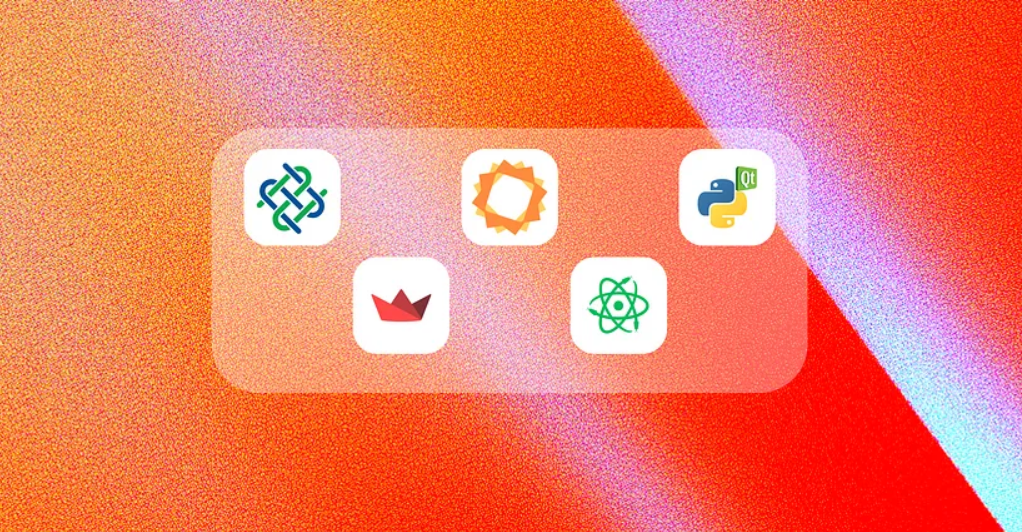Top 6 Python Frontend Libraries for Data Science

Python offers a variety of frontend libraries, each with its strengths and limitations, making it essential to choose the right one depending on your project needs. Whether you’re a Data Scientist, Data Engineer, Machine Learning Engineer, or Python Developer, knowing at least one frontend library can greatly enhance your capabilities, from building prototypes and dashboards to developing full-scale applications.
In this article, we’ll explore six popular Python frontend libraries, examining their unique features, pros, and cons.
Streamlit is a widely-used open-source Python framework, ideal for quickly creating interactive data applications without needing extensive web development skills. It’s particularly suitable for data scientists and machine learning engineers.
- Advantages: Easy to set up, highly accessible for creating and sharing simple, attractive web apps in minutes. It’s perfect for rapid prototyping or creating small projects.
- Disadvantages: Limited scalability and customization options. Streamlit is best suited for one-page applications and might not be the right choice for larger, more complex projects.
Solara is a framework that allows you to build web apps purely in Python, using ipywidgets or a React-like API. It integrates well with Jupyter Notebooks and can also function as standalone web apps.
- Advantages: Component-based design simplifies state management, making it easier to maintain and scale applications. It leverages the full power of the Python ecosystem.
- Disadvantages: Less popular, making it harder to find community support or templates. The learning curve is steeper due to the need for understanding state management and component-based architecture.
Trame is an open-source platform that simplifies the creation of interactive and visually appealing web applications. It’s designed for building reactive, stateful applications with minimal web development knowledge.
- Advantages: Excellent for creating science-focused apps with complex visualizations, including 3D simulations. It’s versatile and can be deployed across various platforms.
- Disadvantages: Still relatively new with a smaller community, meaning potential bugs and limited documentation. It requires time to fully grasp its concepts and features.
ReactPy is a Python package that allows you to build user interfaces similar to ReactJS but without JavaScript. It supports various backends like Flask, FastAPI, and Django.
- Advantages: Ideal for those familiar with ReactJS who want to work entirely in Python. It’s a strong choice for building multi-page websites and other standard web projects.
- Disadvantages: Being a newer library, ReactPy has a smaller community and fewer third-party libraries. It’s still in development, which could lead to bugs or incomplete features.
PyQt is a Python binding for the Qt toolkit, primarily used for developing graphical desktop applications across multiple operating systems.
- Advantages: It offers a comprehensive set of widgets and excellent customizability, making it one of the best options for desktop app development. It also supports multimedia integration.
- Disadvantages: Installation is more complex compared to other libraries, and a commercial license is required for non-open-source projects. The learning curve is steep due to its extensive feature set.
PyScript is an emerging framework that allows developers to write Python code directly in HTML files, making it possible to create fully functional web applications using Python, without needing to rely on JavaScript. By integrating Python into the web development ecosystem, PyScript opens up new possibilities for developers who prefer Python but need to build web-based applications.
- Advantages: PyScript provides a way for Python developers to create web applications without needing to learn JavaScript or other frontend languages.
- Disadvantages: Since PyScript runs in the browser, performance might not match that of traditional JavaScript-based applications, especially for more complex tasks.
Origin Article: https://ai.gopubby.com/top-5-python-frontend-libraries-for-data-science-91261a65e366
References:
https://streamlit.io/
https://solara.dev/
https://kitware.github.io/trame/
https://reactpy.dev/docs/index.html
https://pypi.org/project/PyQt5/#:~:text=PyQt5%20is%20a%20comprehensive%20set,platforms%20including%20iOS%20and%20Android.
https://pyscript.net/

